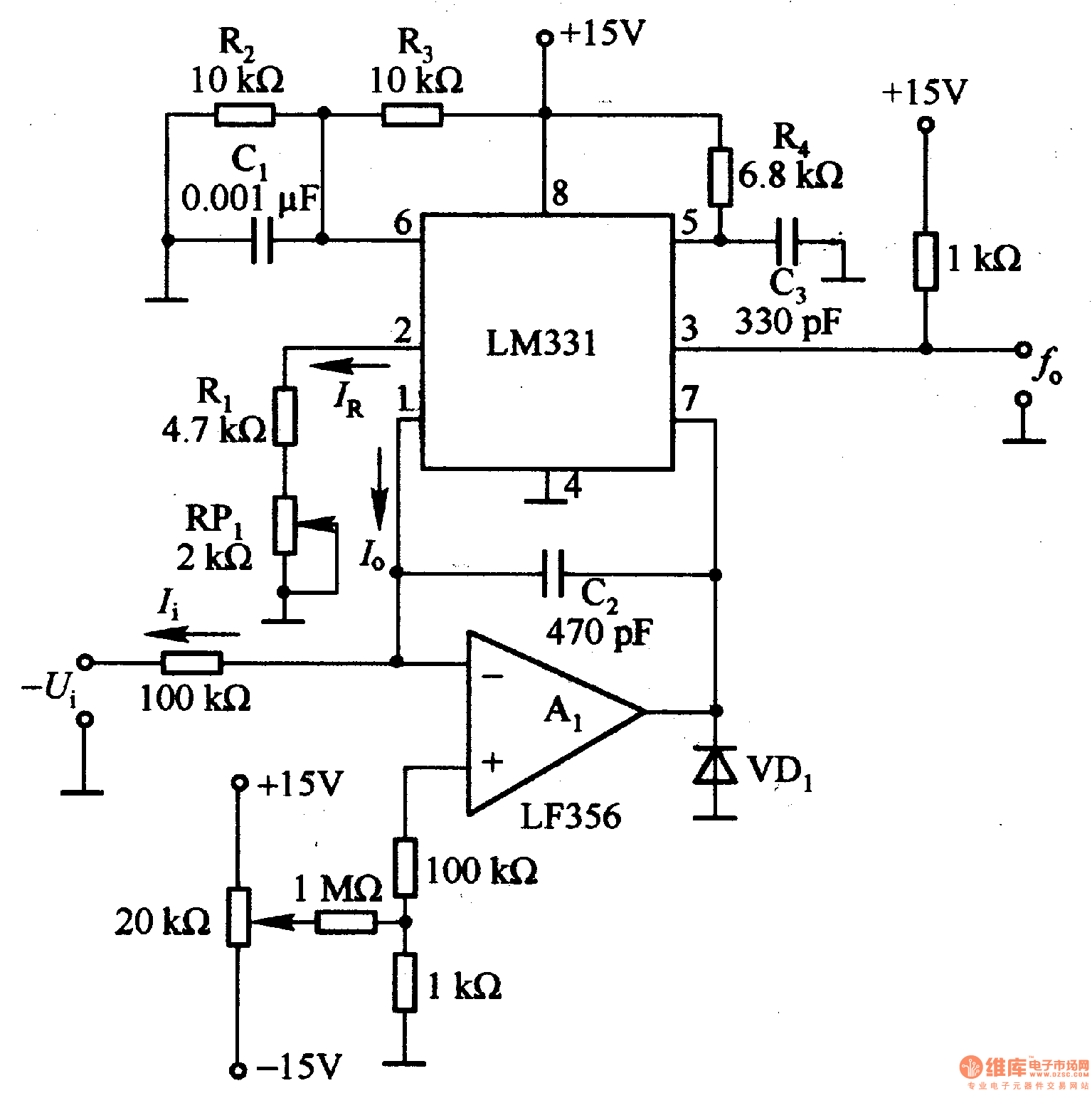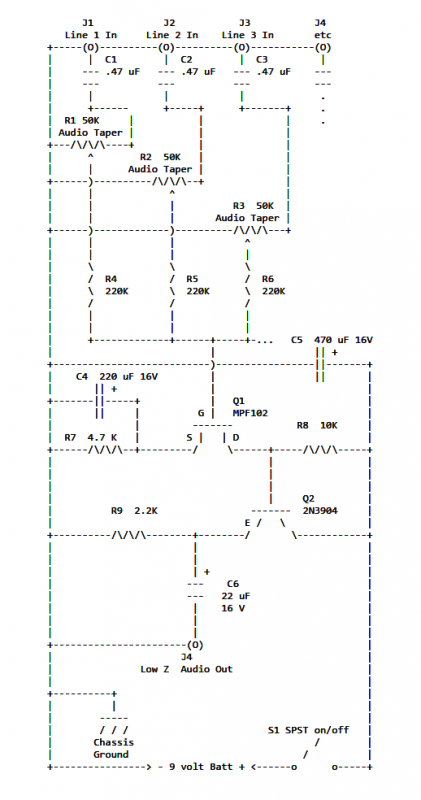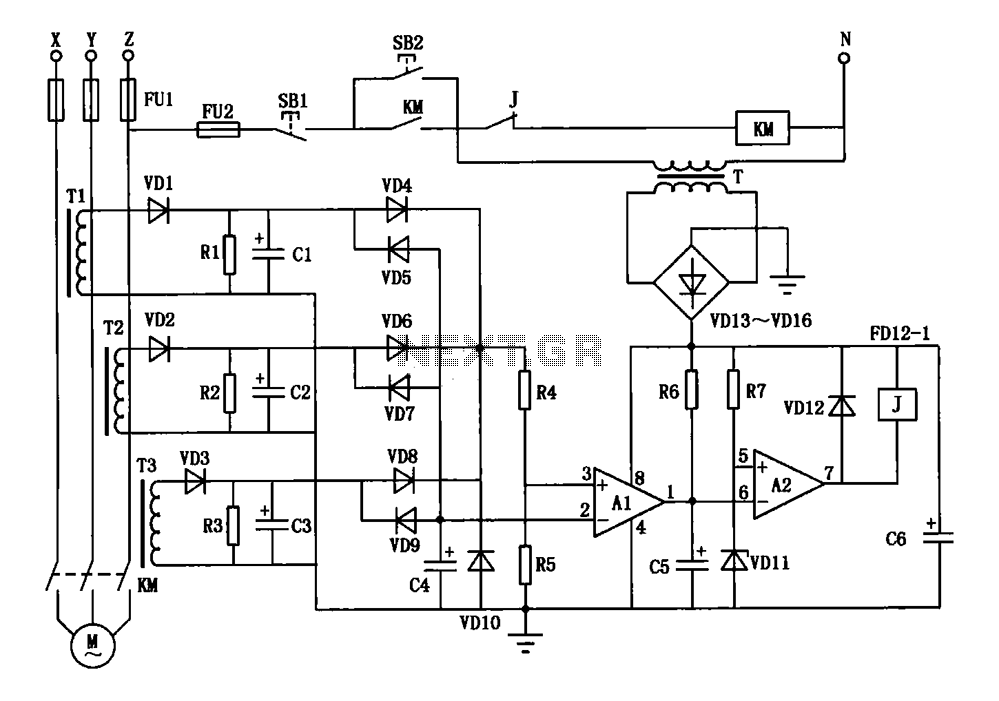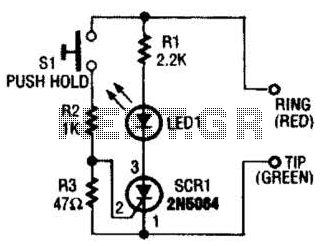
frequency conversion circuit composed of LM331

The LM331 is a single voltage-to-frequency conversion integrated circuit (IC) that includes a 1.9 V reference voltage, a current switch, a comparator, and a flip-flop. To expand its operational range, an A1 operational amplifier is added to the circuit. The reference current (IR) is determined by the equation IR = 1.9 V / (Rl + R(RPl)), where the typical range for IR is between 100 to 500 µA.
The LM331 is designed for applications requiring precise voltage-to-frequency conversion, making it suitable for use in frequency modulation and digital signal processing. The integration of a 1.9 V reference voltage allows for stable operation across various conditions. The current switch feature enables the IC to toggle output states based on the input frequency, while the comparator function facilitates the comparison of input signals to generate output signals that reflect the frequency of the input.
The addition of an operational amplifier (A1) enhances the circuit's performance by improving the input impedance and allowing for better signal conditioning. This is particularly important when interfacing with sensors or other low-level signals. The reference current (IR) is a critical parameter that influences the frequency output of the LM331. By adjusting the resistors Rl and R(RPl), the designer can finely tune the reference current to meet specific application requirements, ensuring that the output frequency accurately represents the input voltage.
In a typical application, the LM331 can be configured to convert a varying input voltage into a corresponding frequency output. This frequency output can then be used for further processing, such as in frequency counters or digital displays. The design considerations must include the selection of appropriate resistor values to set the desired reference current and the operational amplifier's characteristics to maintain signal integrity throughout the circuit.LM331 is the single voltage / frequency conversion IC within 1.9 v reference voltage, current switch, comparator and flip-flop, etc. In order to expand the range, the circuit is added A1 op amp. The reference current IR is decided by (Rl + R (RPl)), as the internal reference voltage is 1.9 V, IR = l · 9V / (Rl + R (RPl)), the usual range is 100 to 500?A.
I.. 🔗 External reference
The LM331 is designed for applications requiring precise voltage-to-frequency conversion, making it suitable for use in frequency modulation and digital signal processing. The integration of a 1.9 V reference voltage allows for stable operation across various conditions. The current switch feature enables the IC to toggle output states based on the input frequency, while the comparator function facilitates the comparison of input signals to generate output signals that reflect the frequency of the input.
The addition of an operational amplifier (A1) enhances the circuit's performance by improving the input impedance and allowing for better signal conditioning. This is particularly important when interfacing with sensors or other low-level signals. The reference current (IR) is a critical parameter that influences the frequency output of the LM331. By adjusting the resistors Rl and R(RPl), the designer can finely tune the reference current to meet specific application requirements, ensuring that the output frequency accurately represents the input voltage.
In a typical application, the LM331 can be configured to convert a varying input voltage into a corresponding frequency output. This frequency output can then be used for further processing, such as in frequency counters or digital displays. The design considerations must include the selection of appropriate resistor values to set the desired reference current and the operational amplifier's characteristics to maintain signal integrity throughout the circuit.LM331 is the single voltage / frequency conversion IC within 1.9 v reference voltage, current switch, comparator and flip-flop, etc. In order to expand the range, the circuit is added A1 op amp. The reference current IR is decided by (Rl + R (RPl)), as the internal reference voltage is 1.9 V, IR = l · 9V / (Rl + R (RPl)), the usual range is 100 to 500?A.
I.. 🔗 External reference





